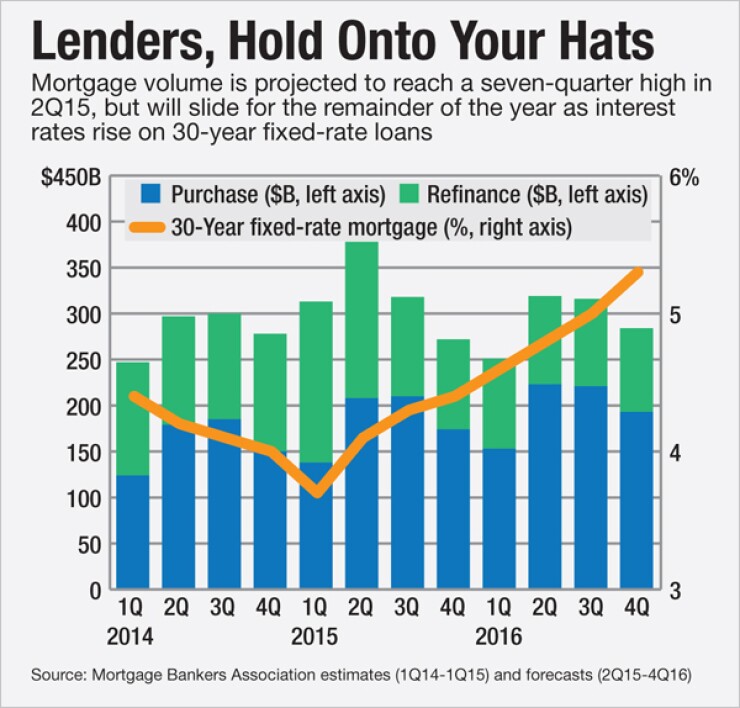

The labor market is the No. 1 driver of housing, and it will take a return to full employment and appreciable gains in wages to spur housing growth this year, mortgage industry economists said.
Even though
Speaking at the Mortgage Bankers Association's Secondary Market Conference in New York, Kiefer predicted it would take some time before conditions are right for housing to expand. Furthermore, the timing will vary greatly by region, with areas such as Texas and California having an edge over other parts of the country.
Projections of 6 million home sales in 2015 are still well below what should be seen in a well-functioning housing market, Kiefer said.
That is the short-term outlook. For 2017 and beyond, household formations and other demographic factors will have a big impact, he said.
Baby boomers will play a big role in shaping housing and lending, noted Doug Duncan, the chief economist for Fannie Mae.
They are retiring at the rate of 10,000 people per day, Duncan said. They represent 25% of the U.S. population and hold 50% of home equity.
Eight in 10 of them have said they plan to remain in their homes. So what will happen to the $6.3 trillion in home equity they hold? Some are going to tap that to supplement their retirement income. Others might use the funds to pay for home-accessibility improvements, Duncan said.
Regarding the other end of the age spectrum, many are worried about the dearth of millennials in the home-purchase market. But Duncan sees the fact that most of this group is living in single-family rental homes as a sign they wish to be homeowners in the future.
"The question is: when and how?" he said. Many people blame millennials' reluctance to buy on high levels of student debt and concerns about the cost of mortgages. But Duncan said whether someone graduated college is actually more of a positive factor than levels of student debt in determining interest in homeownership.
Job and income growth are the forces that have to draw them into the market, Duncan said.
"Demand weakness trumps credit tightness" as a challenge for mortgage originators going forward, he said.
Meanwhile the average loan amount for a purchase mortgage is rising much quicker than
The MBA recently increased its 2015 origination forecast
Interest rates will rise — as happened in 2013 — when the Federal Reserve starts discussing plans to taper its balance sheet, long before it acts, he said. And such talk will add to market volatility, Fratantoni said.
Purchase volume will top $200 billion in both the second and third quarters of this year, before dropping to $174 billion in the fourth quarter, he added.
Mortgage lender profitability will be challenged as loan-production expenses continue to rise, he said. Fixed costs associated with hiring compliance personnel will be the main culprit, more so than higher pay for loan officers, he said.
Regulatory costs are "changing the nature of the business," he said. As recently as the end of 2008, 60% of mortgage-production employees were revenue-generating loan officers. That has now been flipped to where non-revenue-producing employees are 60% of the total.
At the same time
So the increased costs associated with the compliance emphasis are the main driver of increased merger and acquisition activity among mortgage lenders, Fratantoni said.





